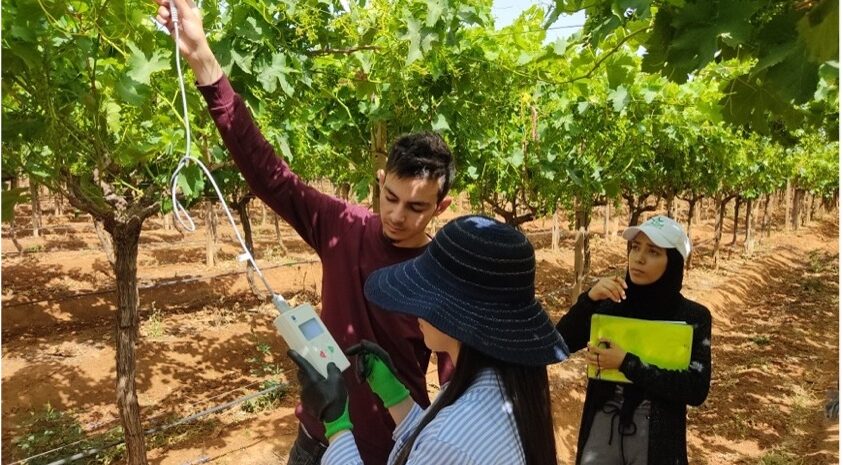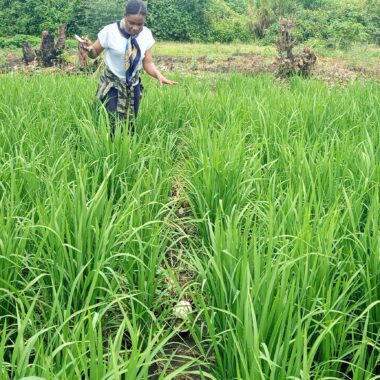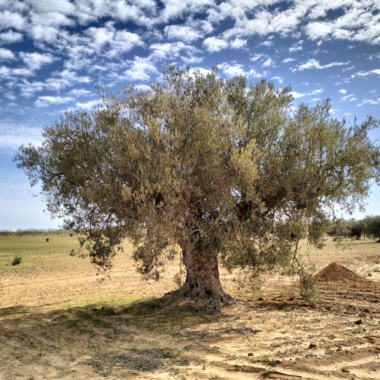Investigating Plant Stress Indicators in Morocco’s Grape Orchards
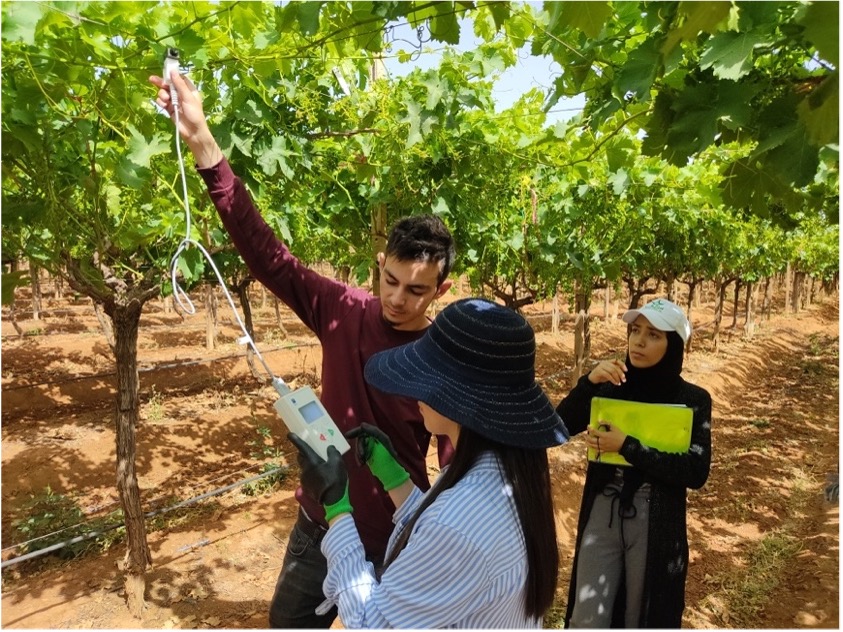 .
. 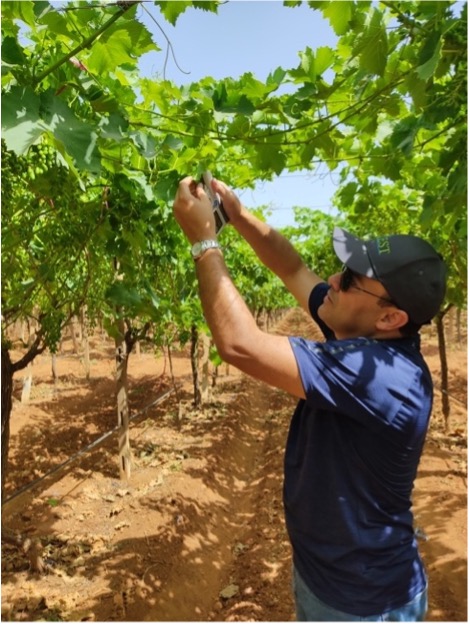
The Bouarg and El Garet plain regions of Morocco are especially famous for having large areas under table grape (Vitis vinefera) production. However, most plantations in this area are still young due to their establishment soon after the Green Morocco Program was launched in 2008. Now table grapes represent an important agricultural product for Morocco particularly for this eastern region of the country.
Table grape fertilization typically includes splitting nitrogen (N), phosphorus (P), potassium (K), calcium (Ca), magnesium (Mg), and micronutrients according to the needs of each phenological stage of the crop. At the end of each fall season and just before dormancy, local growers will also use organic amendments combined with a basic NPK fertilizer.
Mr. Khadija Amsaadi, a Plant Biology and Biotechnology student under the supervision of Professor Kamal Aberkani at University Mohammed First (UMP) in Selouane, Morocco, is particularly interested in the effect of NPK fertilization on specific plant physiological parameters related to stress, as well as fruit yield and quality. The work is part of his M.Sc. field project located on an 8-year-old table grape crop (cv. Regal) grown in the El Garet region.
Experimental Background
The study’s fertilization treatment included an April 7th application of 150 g/tree of 15-15-15 placed at a 5 cm depth just above to the root system. Plots are managed according to good agronomic practices for fertilization, irrigation, pesticides, etc. that are commonly used in commercial production in Morocco. Twenty-four trees were selected from each treatment (i.e., control and test treatment with basal fertilizer) to quantify the physiological and productivity effects.
Mr. Amsaadi used several measures to screen for conditions of plant stress under the two treatments. Measures included stomatal conductance (gs), a measure of the degree of stomatal opening, and several indices related to chlorophyll a fluorescence. Chlorophyll fluorescence usually indicates the transfer of electrons during the light phase of photosynthesis from the excitation of chlorophyll by light energy to the transfer of electrons in the dark phase (Strasser et al., 2000). Maximum fluorescence time (Tfm) is the time required to obtain maximum fluorescence (Fm). Typically stress reduces variable fluorescence (Fv), initiative fluorescence (F0) and quantum yield (Fv, Fm) (Farzad et al., 2007). The ratio Fv/Fm varies between 0.75 and 0.85 in non-stressed plants (Liu et al., 2015). As electron transport is increasingly blocked at photosystem-II (PSII), plant stress increases and the time to obtain Fm and Tfm decreases (Zivcak et al., 2013). Performance index (PI) was another indicator of plant stress calculated from modeling 60 parameters of leaf fluorescence. As PI decreases, plant stress increases (Hazem et al., 2012).
A porometer (SC-Leaf porometer, ICT International, Germany) was used to measure gs while the HPEA sensor (Handey PEA, Hansatech, UK) was used to measure stress fluorescence. Measurements were recorded on a hot and sunny day, June 7, 2022, during two periods: (i) 10:15-11:00am and (ii) 13:00-13:45. Measurements were taken on the fifth leaf, from the apex of the main stem of the plant. For the stress fluorescence measurements, Leaves were adapted to the dark for 30 min using a clip. Then, a light flash of 3000 µmol/m2/s (650 nm) was applied for 1 s (gain = x1) to the leaf. The measurements were taken on 6 plants for each treatment. Air temperatures was also recorded using a weather station (Mysens, UTAD, Portugal).
Early results
The hot (36-37oC) and clear sky conditions failed to generate a significant change in the ratio of the stress indices Fv/Fm, Tfm and PI in fertilized plants versus control plants (Table 1). Given the range of Fv/Fm values obtained it is likely that the conditions in the field had not yet generated significant stress to the plant. Measurements of gs were also unaffected by fertilization with respective values being 21.8 and 22.9 mmol/m2/s for the control and fertilized treatments during the morning, and 19.2 and 20.2 mmol/m2/s during the afternoon.
Table 1. Stomatal conductance (gs) and the stress indices Fv/Fm, Tfm and PI measured on the fifth expanded leaves on table grapes during two periods of a hot and sunny day (June 7th, 2022) for the control and prototype treatment fertilized with 15-15-15.
| Period 1 (10:15-11:00am) | Period 2 (13:00-13:45) | |||
| Control | +15-15-15 | Control | +15-15-15 | |
|
Air temperature (oC) |
36.4 |
37.8 |
||
| Leaf temperature (oC) | 34.9 ±1.2 | 35.3 ±1.1 | 37.6 ±0.2 | 37.5 ±0.2 |
| Leaf relative humidity (%) | 15.0 ±1.2 | 15.4 ±3.8 | 15.7 ±2.6 | 14.8 ±1.8 |
| Stomatal conductance (gs) (mmol/m2/s) | 21.8 ±6.1 | 22.9 ±3.5 | 19.2 ±2.0 | 20.2 ±3.1 |
| Fv/Fm | 0.77 ±0.04 | 0.76 ±0.04 | 0.77 ±0.02 | 0.76 ±0.03 |
| Tfm (ms) | 208 ±25 | 234 ±21 | 278 ±18 | 266 ±26 |
| PI | 0.58 ±0.21 | 0.47 ±0.17 | 0.42 ±0.08 | 0.40 ±0.11 |
Data are mean of 6 replicates ±standard deviation.
Contributed by Khadija AMSAADI, Graduate Student at the Master on Plant Biology and Biotechnology, Polydisciplinary Faculty of Nador, University Mohammed First (UMP), Selouane, Morocco; and Kamal ABERKANI, Professor, FPN-UMP. Comments and questions can be sent to the corresponding author at k.aberkani@ump.ac.ma
References
Hazem M. Kalaji, et al. 2012. Fluorescence parameters as early indicators of light stress in barley, J. Photochem and Photobiol. B: Biology. 112, 1-6, https://doi.org/10.1016/j.jphotobiol.2012.03.009.
Liu, Y., et al. 2015. Effect of lowering irradiance on the photosynthetic performance and spiking of Phalaenopsis. Photosynthetica. 54. https://doi.org/10.1007/s11099-016-0079-z.
Strasser, R., Srivastava, A. and Tsimilli-Michael, Merope. 2000. The fluorescence transient as a tool to characterize and screen photosynthetic samples. Probing photosynthesis: Mechanism, regulation and adaptation.
Zivcak M. et al. 2013. Photosynthetic electron transport and specific photoprotective responses in wheat leaves under drought stress. Photosynth Res. 117(1-3):529-46. https://doi.org/10.1007/s11120-013-9885-3.

